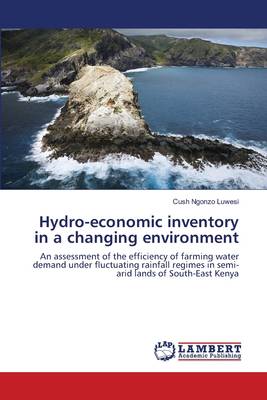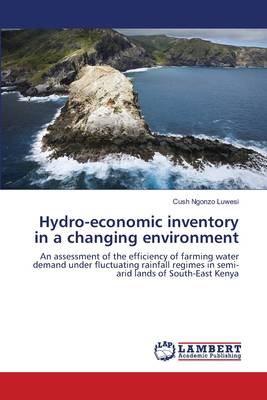
- Afhalen na 1 uur in een winkel met voorraad
- Gratis thuislevering in België vanaf € 30
- Ruim aanbod met 7 miljoen producten
- Afhalen na 1 uur in een winkel met voorraad
- Gratis thuislevering in België vanaf € 30
- Ruim aanbod met 7 miljoen producten
Zoeken
Hydro-economic inventory in a changing environment
An assessment of the efficiency of farming water demand under fluctuating rainfall regimes in semi-arid lands of South-East Kenya
Cush Ngonzo Luwesi
Paperback | Engels
€ 81,45
+ 162 punten
Omschrijving
Water stress and land degradation are causes of food insecurity and poverty in marginal and dry lands of Kenya. South-East Kenya is particularly facing increased risk of crop failure due to increased farming water costs under rainfall variability. This book develops a hybrid approach that integrates spatially distributed variables of plant water use with mathematical description of water availability and farmers water demand. It assesses hydro- geomorphologic impacts affecting efficient use of farming water in Muooni Catchment. It also determines the extent to which land-use activities and other externalities impact on Muooni Dam's active water storage capacity. Finally, it simulates the economic order quantity (EOQ), the limit average cost (LAC) and the minimum efficient scale (MES) of farmers water demand under above normal, normal and below normal rainfall regimes. The book is intended to foster efficient water use in the course of climate change. It may assist irrigation planners, dams and watershed managers as well impact assessment researchers .
Specificaties
Betrokkenen
- Auteur(s):
- Uitgeverij:
Inhoud
- Aantal bladzijden:
- 180
- Taal:
- Engels
Eigenschappen
- Productcode (EAN):
- 9783843376075
- Verschijningsdatum:
- 20/12/2010
- Uitvoering:
- Paperback
- Afmetingen:
- 152 mm x 220 mm
- Gewicht:
- 272 g

Alleen bij Standaard Boekhandel
+ 162 punten op je klantenkaart van Standaard Boekhandel
Beoordelingen
We publiceren alleen reviews die voldoen aan de voorwaarden voor reviews. Bekijk onze voorwaarden voor reviews.








